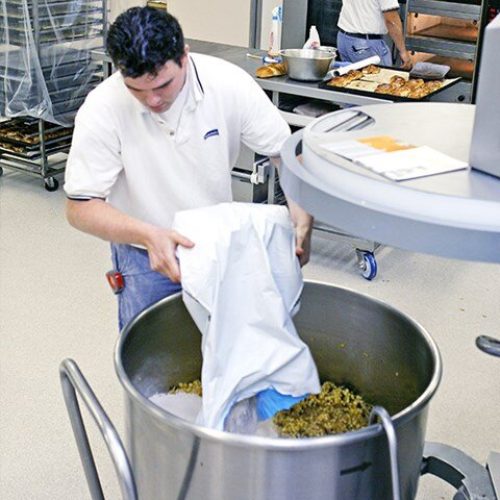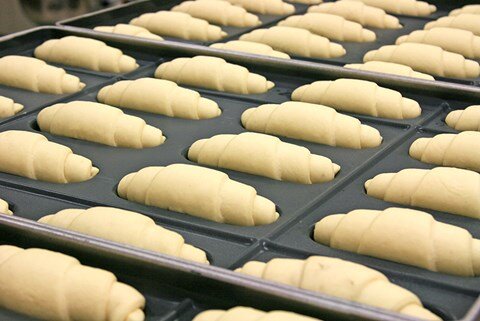long shelf-life
PRODUCTION WITH LONG SHELF-LIFE
Laminated products like croissants and puff pastries are gaining popularity worldwide. Each region of the world has its own laminated products and, consequently, unique characteristics. In some parts of the world, especially in the Middle East and Asia, there is a demand for products with a long shelf life. This is why croissants and pastries with a long shelf life have been developed. Croissant production lines were among the very first bakery production lines produced by Rademaker, and we are proud to be a global leader in this field. With four decades of experience, Rademaker can produce long shelf-life production solutions that meet the requirements of our customers.
RECIPE
The recipe for long-shelf-life products is unique. Long-lasting softness is achieved by using sourdough and a rich recipe with margarine, sugar, eggs, glucose syrup, and a special enzyme blend. The enzyme mix can be combined with a bread improver to contribute to tolerance and volume. The combination of these ingredients, in their specific formulation, reduces the amount of free water in the dough (aW).
Process and Procedure
Long-shelf-life croissants are produced with very long fermentation times. This differs from the process for ‘regular’ croissants. The extended fermentation times are a result of using sourdough (also known as levains, brews, preferments, sourdough, etc.) in combination with a very low amount of free water and the high levels of fat and sugar in the dough. Maximum flavor development and sometimes the use of preservatives such as calcium propionate also contribute to these long fermentation times. However, the sourdough process contributes the most to these extended fermentation periods.
Processing
Long SHelf Life


